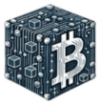Smart contracts have revolutionized the blockchain industry, enabling automated, trustless, and transparent transactions. These self-executing contracts run on decentralized networks, eliminating intermediaries and reducing costs while enhancing security. As the demand for decentralized applications (dApps) grows, the competition among smart contract platforms intensifies. Developers and enterprises seek efficient, scalable, and cost-effective solutions to build robust blockchain applications, making it crucial to evaluate the leading platforms shaping the future of this technology.
In 2025, several blockchain networks stand out for their unique features, consensus mechanisms, and growing ecosystems. Ethereum remains the pioneer, but newer platforms like Solana, Cardano, and Avalanche challenge its dominance with high-speed processing, innovative governance models, and interoperability solutions. This article explores the top smart contract platforms, analyzing their advantages, technical capabilities, and potential impact on the industry.
Exness
🟢 Min Deposit: 0$
🟢 Tradable Instruments: 240
🟢 Fees: Medium
Exness stands out for its competitive spreads, ultra-fast trade execution, and flexible leverage options. Regulated by multiple authorities, it ensures a secure trading environment. The platform supports forex, metals, cryptocurrencies, and indices. Exness offers a range of account types, making it suitable for both beginners and professionals. Additionally, its transparent pricing and 24/7 customer support enhance the trading experience.
Ethereum – The Pioneer of Smart Contracts
Ethereum, launched in 2015 by Vitalik Buterin, introduced the concept of smart contracts to the blockchain ecosystem. Unlike Bitcoin, which primarily functions as a digital currency, Ethereum provides a decentralized platform for executing self-enforcing contracts. Its introduction of the Ethereum Virtual Machine (EVM) allowed developers to build decentralized applications (dApps) and deploy smart contracts using Solidity, Ethereum’s native programming language. Over the years, Ethereum has undergone significant upgrades, including the transition to Ethereum 2.0, which replaced the energy-intensive Proof-of-Work (PoW) consensus mechanism with Proof-of-Stake (PoS) to enhance scalability and reduce transaction fees.
Key Features and Updates
Ethereum’s ecosystem continues to expand due to its strong developer community and well-established infrastructure. Some of its core features include:
- Ethereum Virtual Machine (EVM): Allows developers to create and deploy smart contracts in a secure environment.
- Decentralized Finance (DeFi) Hub: The majority of DeFi protocols, including Uniswap, Aave, and Compound, operate on Ethereum.
- Layer 2 Scaling Solutions: Technologies like Optimistic Rollups and zk-Rollups improve transaction throughput while maintaining security.
- Ethereum 2.0 and PoS Transition: Ethereum now relies on validators instead of miners, reducing energy consumption by over 99%.
| Feature | Details |
| Consensus Mechanism | Proof-of-Stake (PoS) |
| Transaction Speed | 15-30 TPS (higher with Layer 2 solutions) |
| Smart Contract Language | Solidity |
| Main Use Cases | DeFi, NFTs, Enterprise Solutions |
Use Cases and Adoption
Ethereum remains the leading platform for dApps, with thousands of active projects spanning multiple industries:
- Decentralized Finance (DeFi): Lending, staking, and yield farming platforms dominate Ethereum’s ecosystem.
- Non-Fungible Tokens (NFTs): Marketplaces like OpenSea and Rarible use Ethereum’s ERC-721 standard for digital assets.
- Enterprise Applications: Companies such as JPMorgan and Microsoft leverage Ethereum for blockchain-based solutions.
- Gaming and Metaverse: Virtual worlds like Decentraland and Axie Infinity operate on Ethereum smart contracts.
Binance Smart Chain (BSC) – Cost-Effective Solutions
Binance Smart Chain (BSC), launched by Binance in 2020, is designed to offer a faster and cheaper alternative to Ethereum. It runs parallel to Binance Chain but includes smart contract functionality, making it a suitable environment for DeFi and NFT applications. Due to its lower transaction fees and compatibility with Ethereum’s EVM, BSC quickly gained traction among developers and users.
Advantages Over Competitors
BSC stands out for its affordability and efficiency:
- Low Transaction Fees: Gas fees on BSC are significantly lower than Ethereum’s.
- High-Speed Transactions: BSC processes around 100-160 transactions per second (TPS), compared to Ethereum’s 15-30 TPS.
- EVM Compatibility: Developers can easily port Ethereum-based projects to BSC.
- Strong Ecosystem Growth: Many DeFi projects and NFT marketplaces have migrated to BSC.
| Feature | BSC | Ethereum |
| Consensus Mechanism | Proof-of-Staked Authority (PoSA) | Proof-of-Stake (PoS) |
| Average Fees | $0.10 | $5-$50 |
| Speed (TPS) | 100-160 | 15-30 |
Popular Projects on BSC
BSC has become home to various dApps, including:
- PancakeSwap: A leading decentralized exchange with lower fees than Uniswap.
- Venus: A lending protocol similar to Aave but optimized for BSC.
- BakerySwap: A hybrid DeFi and NFT marketplace.
- Mobox: A blockchain gaming platform integrating DeFi and NFTs.
Solana – High-Speed Performance
Solana differentiates itself with a unique Proof-of-History (PoH) consensus mechanism, allowing for unparalleled speed and scalability. Unlike Ethereum or BSC, Solana’s blockchain processes transactions sequentially, reducing network congestion and increasing throughput.
Transaction Speed and Scalability
Solana’s performance metrics outperform many competitors:
- Transaction Speed: Capable of handling up to 65,000 TPS.
- Low Latency: Transactions settle in under a second.
- Minimal Fees: Average transaction cost is around $0.00025.
| Metric | Solana | Ethereum | BSC |
| Consensus Mechanism | PoH + PoS | PoS | PoSA |
| Speed (TPS) | 65,000 | 15-30 | 100-160 |
| Fees | $0.00025 | $5-$50 | $0.10 |
Notable Applications
- Raydium: A leading Solana-based DeFi protocol.
- Magic Eden: A rapidly growing NFT marketplace.
- Serum: A decentralized exchange with high-speed trading.
- Star Atlas: A metaverse game utilizing Solana’s efficiency.
Cardano – Research-Driven Development
Founded by Charles Hoskinson, Cardano follows a scientific approach to blockchain development. Its multi-layered architecture ensures security, scalability, and sustainability.
Consensus Mechanism
Cardano uses the Ouroboros Proof-of-Stake protocol, designed to be energy-efficient while maintaining decentralization.
Key Partnerships and Deployments
- Government Blockchain Initiatives: Ethiopia’s education system uses Cardano’s blockchain.
- DeFi Expansion: Projects like SundaeSwap enhance its DeFi ecosystem.
- NFT Marketplaces: Cardano’s low fees attract digital artists and collectors.
Polkadot – Facilitating Interoperability
Polkadot enables multiple blockchains to interconnect via parachains, which communicate through the Relay Chain to improve efficiency.
Cross-Chain Communication
Polkadot enhances interoperability between blockchains, allowing seamless asset transfers across networks.
Ecosystem Growth
- Acala: A DeFi hub optimized for Polkadot.
- Moonbeam: An EVM-compatible parachain.
- Astar: A cross-chain smart contract platform.
Tezos – Self-Amending Blockchain
Tezos enables on-chain governance, allowing the community to vote on protocol upgrades. This eliminates the need for hard forks, ensuring seamless evolution.
Avalanche offers subnets, allowing developers to create custom blockchain networks with optimized consensus mechanisms.
The evolution of smart contract platforms continues to push the boundaries of blockchain technology. While Ethereum maintains its stronghold as the leading platform, competitors like Binance Smart Chain, Solana, and Polkadot offer unique advantages tailored to different use cases. Scalability, transaction speed, and interoperability remain key factors influencing platform adoption, driving continuous innovation in the sector.
As we move further into 2025, the smart contract landscape will likely see even more advancements in security, efficiency, and real-world applications. Developers and businesses must stay informed about these evolving technologies to leverage the best solutions for their needs. Whether building decentralized finance (DeFi) applications, NFTs, or enterprise solutions, choosing the right smart contract platform is crucial for long-term success in the blockchain ecosystem.



